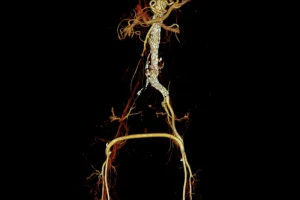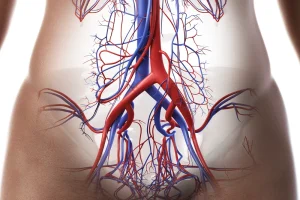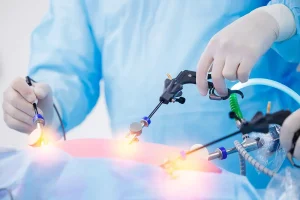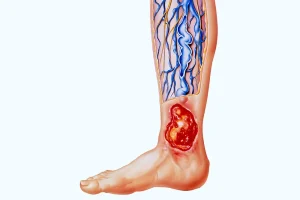May-Thurner Syndrome: Causes, Symptoms and Treatment
- Medically checked
Home » May-Thurner Syndrome: Causes, Symptoms, and Treatment
Medical Procedures
Vascular Techniques
Endovascular Techniques
Conditions Treated

What is May-Thurner syndrome?
May-Thurner syndrome occurs when the right iliac artery presses on the left common iliac vein, reducing blood flow in this area. This constant pressure can cause damage to the vein wall, leading to blood clots (venous thrombosis) and other complications.
Causes of May-Thurner syndrome
The main cause of May-Thurner syndrome is anatomic compression of the left iliac vein. Additional factors that may contribute include:
- Genetic predisposition to venous disease;
- Mechanical factors, such as pregnancy, which may place additional pressure on the veins;
- Trauma or other conditions that aggravate vein compression.
Symptoms of May-Thurner syndrome
Symptoms can vary depending on the severity of the compression and the presence of complications such as deep vein thrombosis (DVT). Among the most common signs and symptoms are:
- Swelling (edema) in one leg, usually on the left side;
- Pain or heaviness in the affected leg;
- Redness or discoloration of the skin on the leg;
- Visible, prominent or varicose veins in the pelvic area or on the foot.
These symptoms may be aggravated by prolonged standing or strenuous exercise.
Diagnosis of May-Thurner syndrome
To diagnose this condition, doctors use advanced imaging methods such as:
- Doppler ultrasound: Identifies blood flow and obstructions in veins;
- Contrast venography: Visualizes the anatomical details of veins and arteries;
- Computed Tomography (CT) or Magnetic Resonance Imaging (MRI) : Provides precise images of left iliac vein compression.
A correct diagnosis is essential to determine the severity of the syndrome and to guide treatment.
Treatment of May-Thurner Syndrome
At VenArt Clinic, we offer personalized solutions for treating May-Thurner Syndrome, including:
1. Venous Stenting
This is the primary method of treatment for May-Thurner syndrome. The procedure involves placing a stent in the compressed vein to keep it open and restore normal blood flow. Advantages of stenting include:
- Minimally invasive procedure;
- Rapid reduction of symptoms such as pain and swelling;
- Rapid recovery, allowing return to daily activities.
2. Anticoagulant Therapy
Patients may require anticoagulant therapy to prevent blood clots from forming, especially in associated deep vein thrombosis.
3. Post-Treatment Monitoring
After treatment, regular monitoring is essential to assess the condition of the stent and prevent recurrences.
Why choose VenArt Clinic for the treatment of May-Thurner Syndrome?
At VenArt Clinic, our team of vascular surgery specialists combine advanced technology with extensive experience to provide top-notch treatments. Benefits of treatment at our clinic include:
- Fast and accurate diagnosis;
- Minimally invasive procedures performed by specialized physicians;
- Long-term support and follow-up for optimal results.
Conclusion
May-Thurner Syndrome can have a significant impact on quality of life, but with correct diagnosis and appropriate treatment, symptoms can be relieved and complications avoided. If you are experiencing symptoms such as swelling or persistent leg pain, schedule a consultation at the VenArt Clinic.
Our specialists are ready to help you regain your daily health and comfort.








